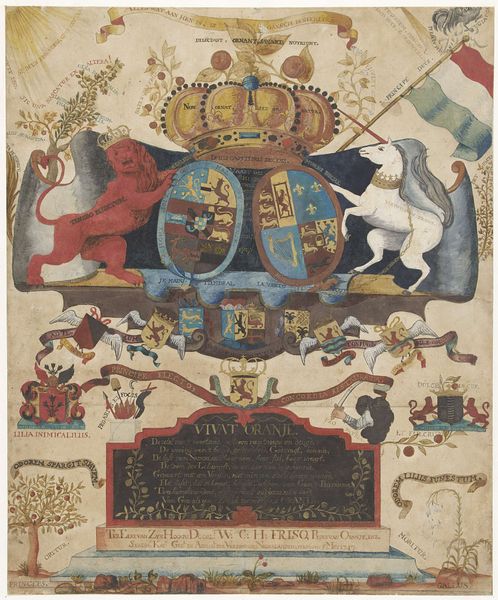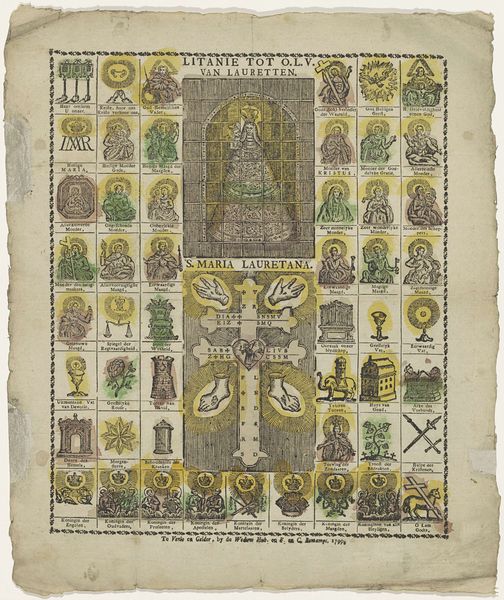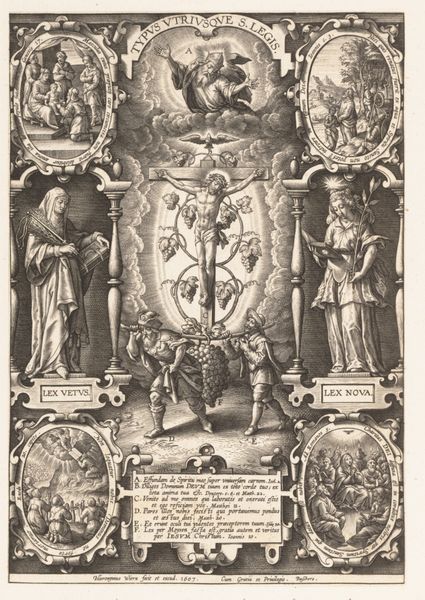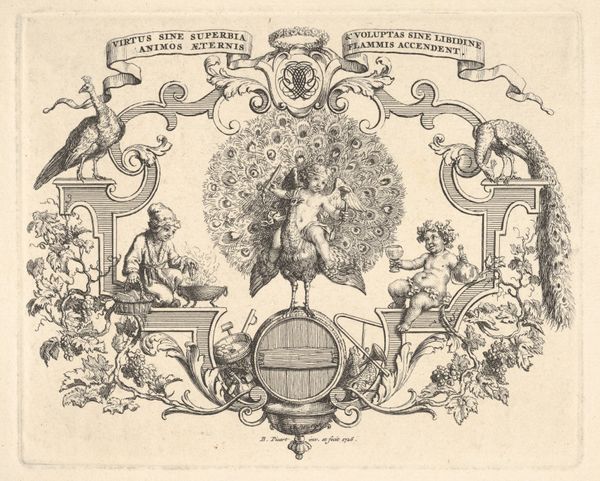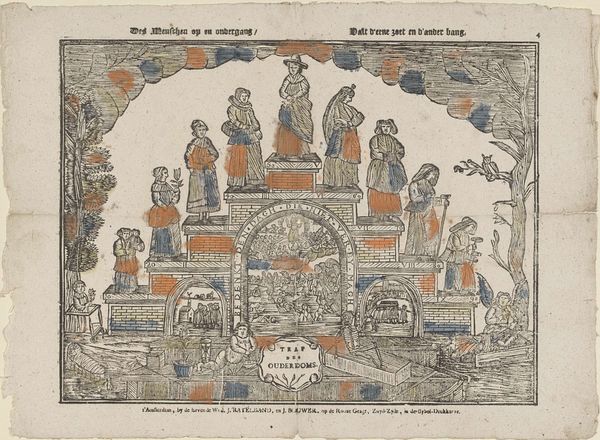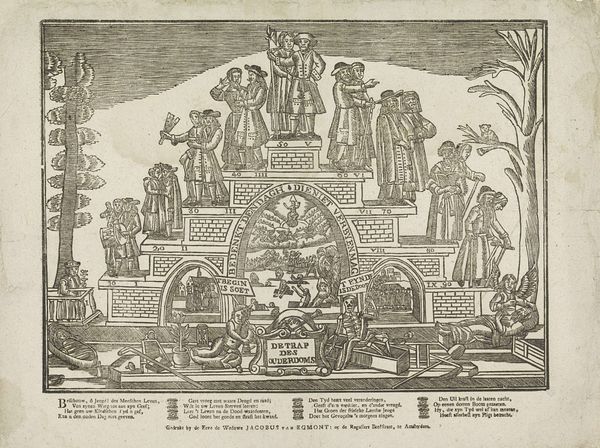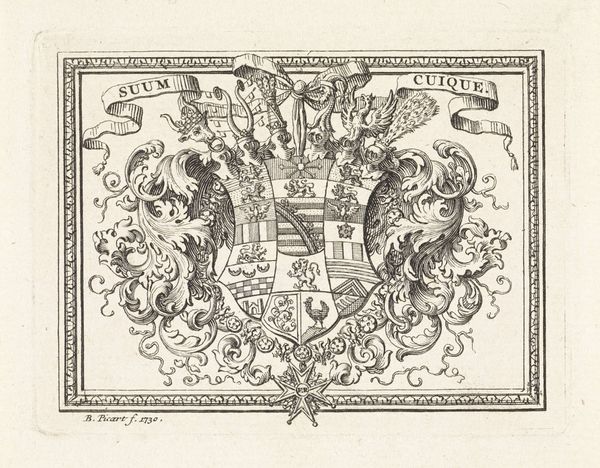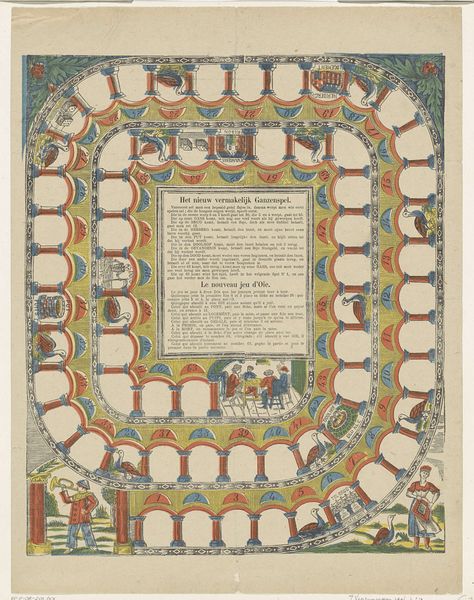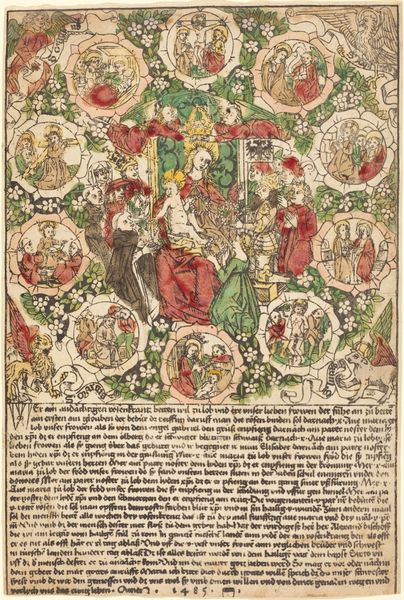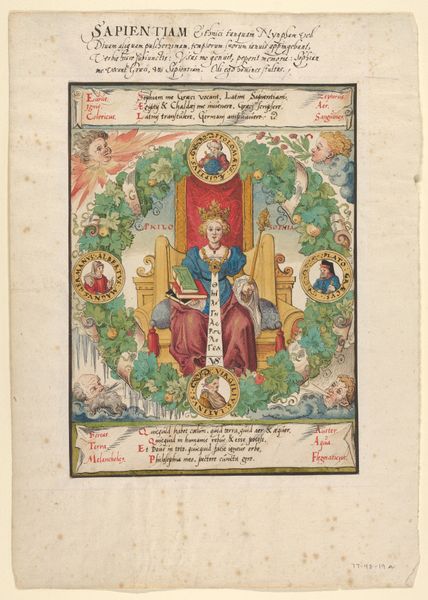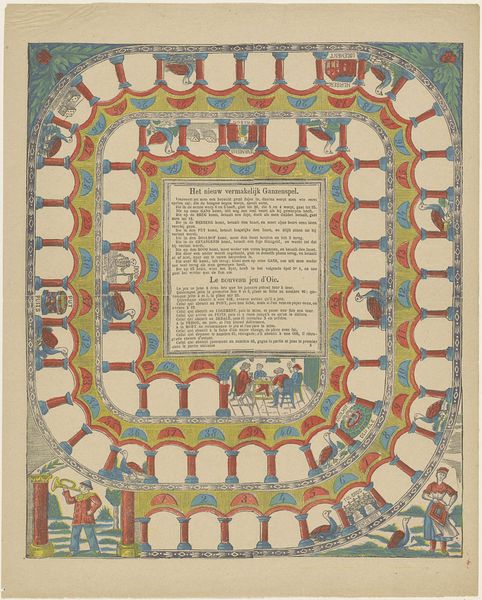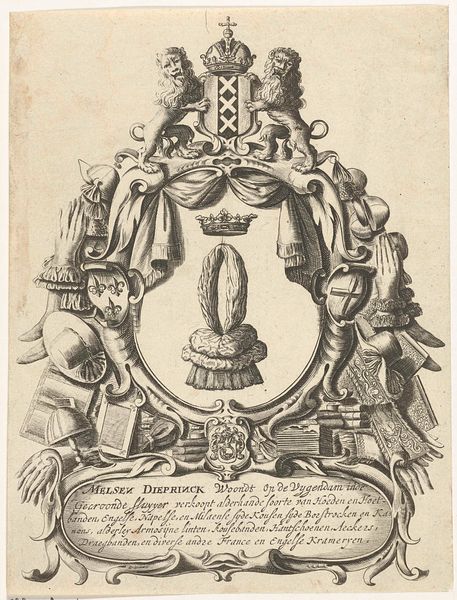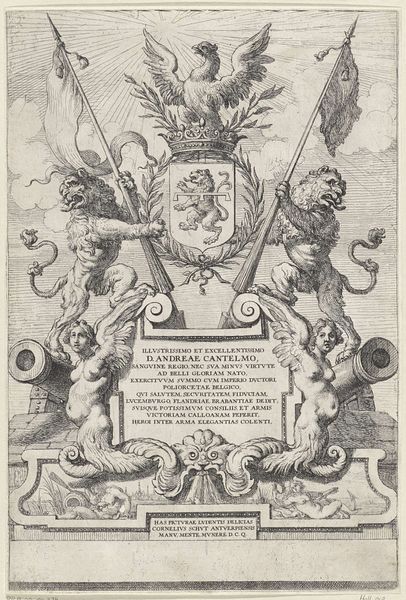
print, engraving
#
allegory
#
baroque
# print
#
history-painting
#
engraving
#
calligraphy
Dimensions: height 237 mm, width 195 mm
Copyright: Rijks Museum: Open Domain
Hendrik de Leth created this print, "Stamboom van het Huis Oranje-Nassau," which translates to "Genealogy of the House of Orange-Nassau," using etching and engraving techniques. These processes involve coating a metal plate with wax, drawing a design to expose the metal, and then using acid to bite into the plate, allowing for detailed and precise lines. The resulting print celebrates the House of Orange-Nassau, a prominent European noble family. The choice of printmaking is significant. Unlike unique paintings, prints can be reproduced, which allows for wider distribution of the image and its message. In the context of the 18th century, this was a powerful way to disseminate political imagery and promote the family's status. The labor-intensive process of etching and engraving speaks to the value placed on craftsmanship at the time, while the medium's reproductive capability aligns with emerging modes of mass communication. De Leth’s print blurs the lines between artistry, craftsmanship, and political propaganda. It reminds us that understanding the materials and methods of production is critical to understanding the full meaning of an artwork.
Comments
No comments
Be the first to comment and join the conversation on the ultimate creative platform.
